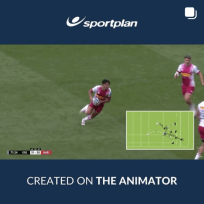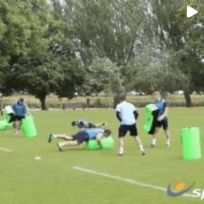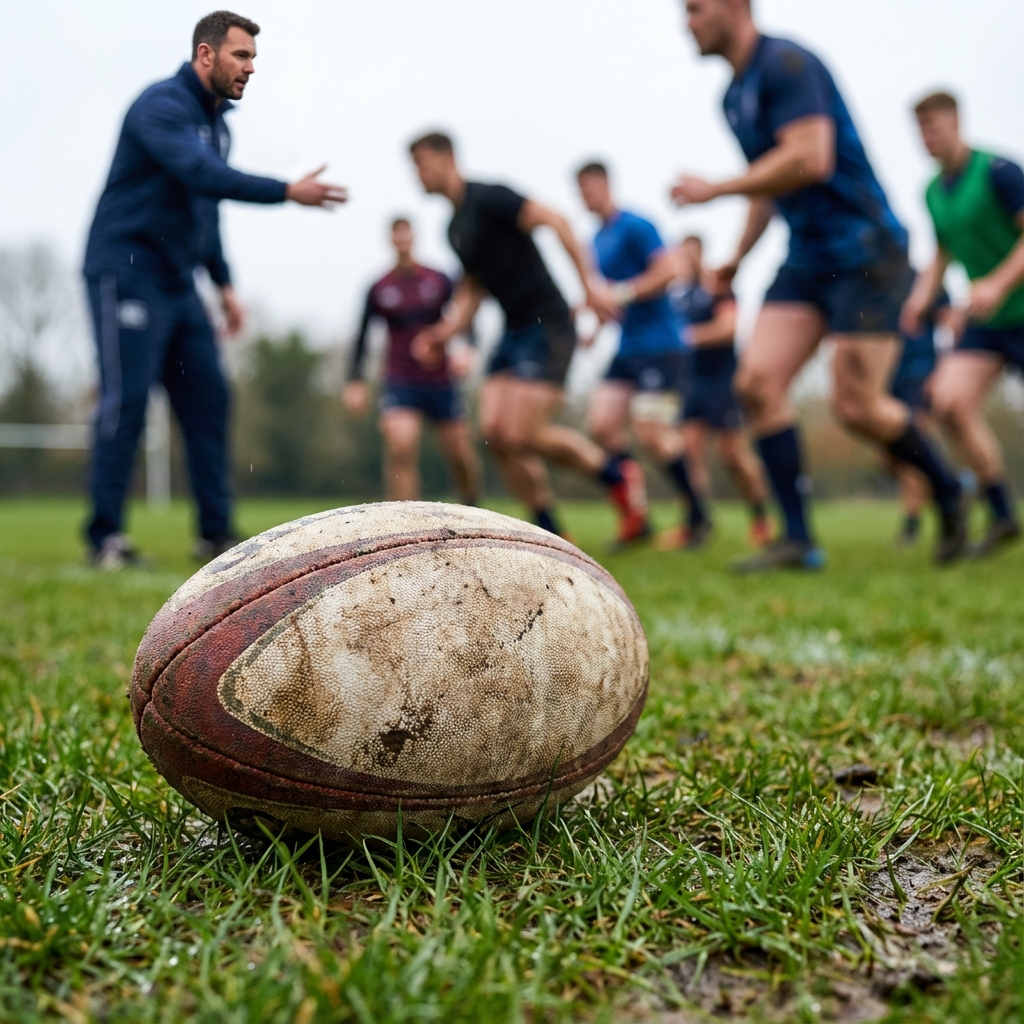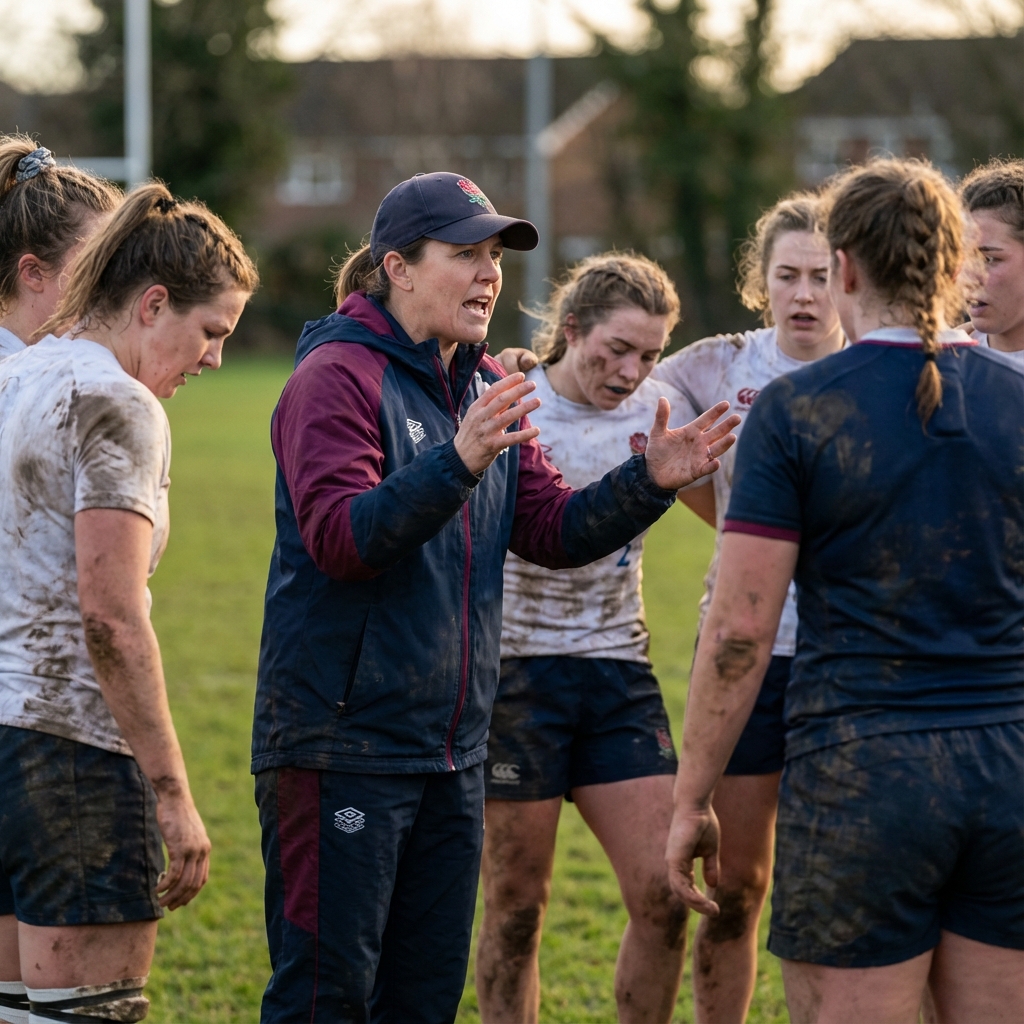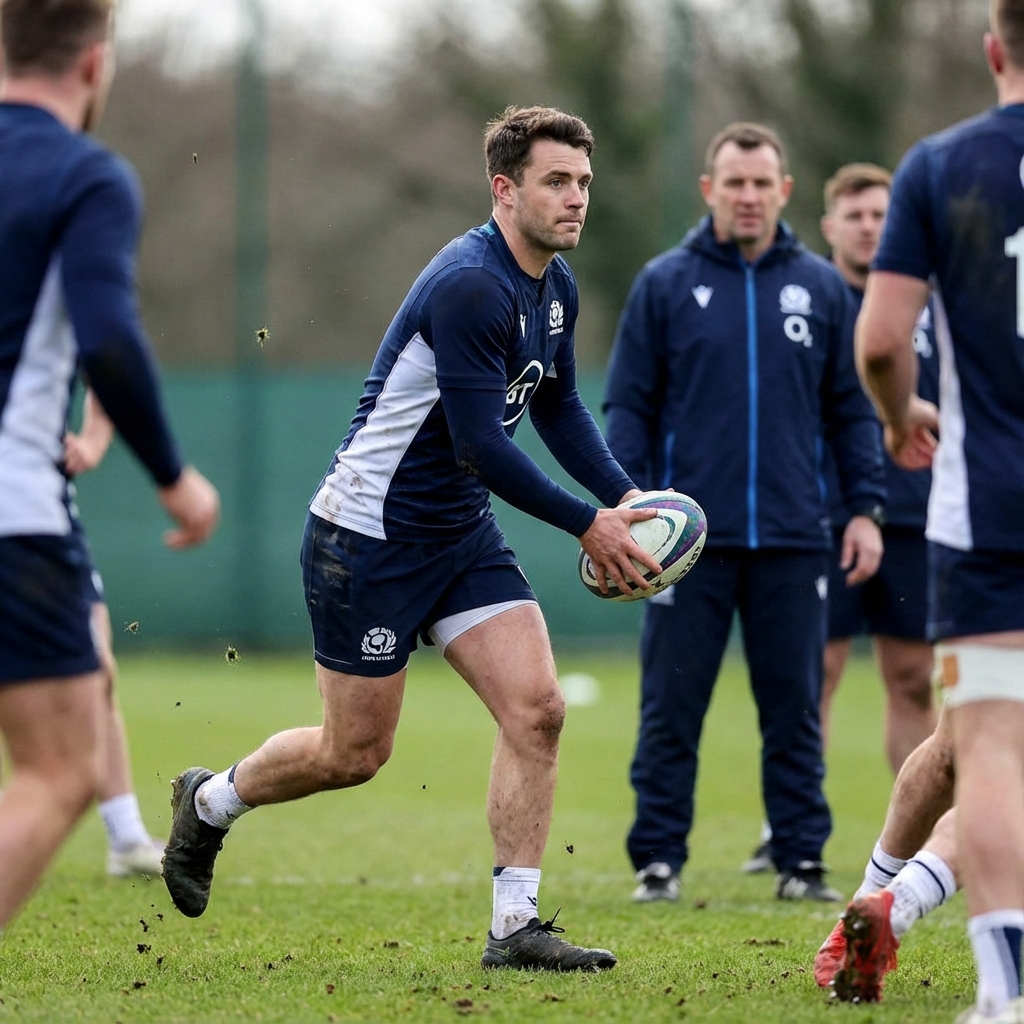Catching a high ball. Any ideas for games/drills?
I assume the key factors to be looking at the ball, get in line with the trajectory, reach for the ball and cradle, sideways stance. Is that right?
Pascal,
I always look at 2 sets of key points when covering catching the high ball.
The first set, the receiver has to think about how to get to the area and arrive to be able to take the high ball. The second set is receiving the ball.
Getting to ball:
- look and assess where the likely area is for the ball to fall
- get to approx. area where the ball will fall
- make final sight and adjust position to receive the ball
Receiving the ball:
- sight ball into arms (soft hands)
- sideways stance - preparing for contact or if ball's dropped there's a chance it will go back
- bring ball into the chest
For games, I play a game called rugby tennis, which I generally play 3v3. Same as tennis, but initially the ball isn't allowed to bounce.
To progress I either increase the playing area or add the condition that the ball has to bounce first before they're allowed to catch it (more skill sets involved).
To make it more game like, I then add invasion to the game where only one player behind the kicker can chase it down, or if there's no players behind, then the kicker can chase it down.
Its a great game with so many variations that can be used to add to it. I like adding a counter attack whereby the receiving team have to attempt to run the ball into the oppo's 'court', and the oppostition have to invade and defend. If successful in defence then they've 5 secs to align in their court before the kick is made.
Good fun and i've tried it out with both kids, youth and adults.
Thank you Dennis, I have a few questions regarding this rugby tennis...do you mean that the ball is kicked? Is that not a problem with kids as some might not be able to kick? Also I've been told to keep key factors to 3 maximum and I have about 5 just to start with!
Introduce the kicking only when they can use it in a game, then you can introduce the technical side of kicking in practice. But in the beginning, just get them throwing passes into the opposition 'court' so long as they're over head height.
You're quite right about introducing KLPs, keep them few so players find understanding easier. You can introduce the above KLPs in 2 halves of a session. Get them confident catching the high ball (accurate kick to player) before introducing the technical KLPs on getting to and under the high ball.
I'd start high ball practices towards the end of the U9 season, as I believe kicking starts in the U10 season.
Is it for your level 1 course? If so, you need to think about how you could progress the practice.
Hope this helps
It is indeed for the level 1, and you're help is much appreciated. I am thinking that this game of tennis, throwing the ball above head height in the opposition area would suffice to introduce all the KLPs gradually. A small area for the catching, progressing onto a bigger area for the running/placement. With maybe some 1 on 1 to work on the catching. The thing is that not being able to kick (my understanding is to do as if we were in our own club, and I coach under 8s) is relatively limiting, plus as you say, its not a skill needed for another year at best! Any tips you have are gratefully appreciated!
I was given the exact same technique to improve when I did my level 1. I progressed it from the warm up to the game of rugby tennis.
With the level 1 course its more about how you coach than what you coach i.e. keeping in mind APES, coaching styles, 'tell, sell, ask, delegate'. When I completed my level 2, I used more of a delegating style, giving players a problem to work through and solve, then drawing key points for planning future sessions from the players.
When you deliver the session, just make sure that its designed so that theres:
- Activity (no players standing around)
- Purpose - to the session
- Enjoyment
- Safety
It is also advisable to look at the coaching styles and decide when would be best to tell, sell, ask or delegate to players. For instance, probably not best to delegate tackle/scrum sessions to younger players or players who are new to the game, however, a problem with retaining ball at the breakdown could be delegated to players to find a solution.
any further help, just ask.







